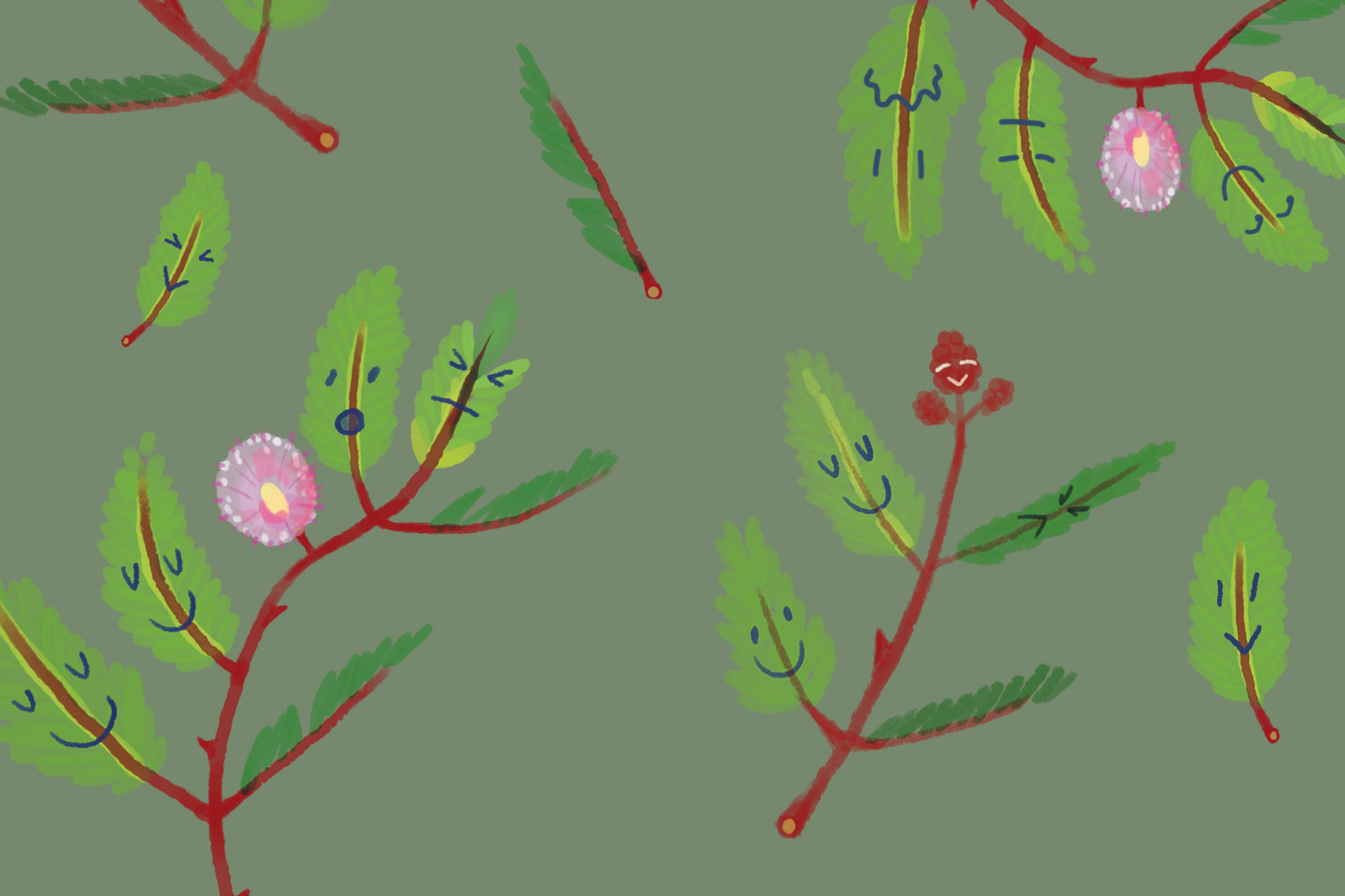Illustration by Mitchell Fong
The magic of the bashful herb awakens childlike sensibilities.
Boy, does sleeping grass make me feel old. After all, what is a local childhood but crack seed stores, shave ice stands, manapua trucks, and beds of sleeping grass?
For the uninitiated—that is to say, for those not from Hawai‘i, Guam, Jamaica, the Philippines, or some other sunny, pan-tropical place—sleeping grass is as nostalgic as a regional plant can be. Patches of it are nestled in the corner of every grandma’s backyard. Its biological wonders are debuted to youth around the same age they learn to fold their first origami cranes. It is the island version of the bubble wrap that kids obsessively pop.
Writing about sleeping grass is a bit like poking and prodding the plant: harmless, a taunt that begets a trick, baffling but bewildering. Only an adult would try to intellectualize something like sleeping grass; the act is antithetical to the childlike fascination it deserves. At the slightest touch, not unlike the way my fingertips graze the letters of this keyboard in search of a sentence—pressing, pushing, deleting, staring, waiting—its leaves fold up, recede, then reopen before my eyes. (First drafts of writing sure feel this way, too, with blank fields of pages where ideas disappear into their own totalities when I dig at them.) Reaching both physically and figuratively for a batch of sleeping grass, I see it can’t be contained. No matter how lightly I treat the subject, it will always feel heavy-handed.
Sleeping grass has been called “bashful,” “shy,” “sensitive,” “pua hilahila” (ashamed), and a bouquet of other personifications that recall that plants are living, breathing entities. It is also called Mimosa pudica, its scientific name, another thing adults did to sleeping grass in age: They made it technical, defining it as an herb of the pea family. Yet, by its simple nature and design, this plant somehow manages to make even the most pedantic corners of the Internet, like Wikipedia’s entry on Mimosa pudica, ring poetic: “The foliage closes in darkness and reopens in light.”
My first encounter with sleeping grass after relocating home from the mainland happened on O‘ahu’s east side in the summer of 2015. I was walking toward a fishpond in Hakipu‘u when a flash of sleeping grass, fanned out and a deep shade of green, appeared at my feet. Like when I have stumbled upon an old box of baseball cards or tuned into The Goonies mid-scene while channel-surfing, a dormant side of me took over when confronted at random with this relic of my youth. In such occasions, I pause. I grow sentimental. And, in this case, I quit stabbing my index finger at my phone and tapped into the earth.
Perhaps this is the ever-relevant magic of sleeping grass: its agile ability to awaken a forgotten curiosity, to bring a grown man to his knees, waving his palm over every visible leaflet, scratching at the dirt. And, boy, it made me feel young.

